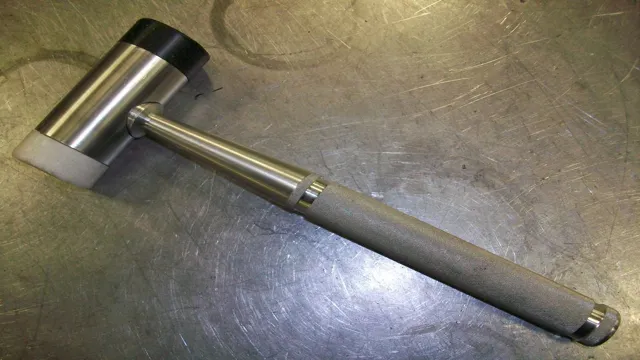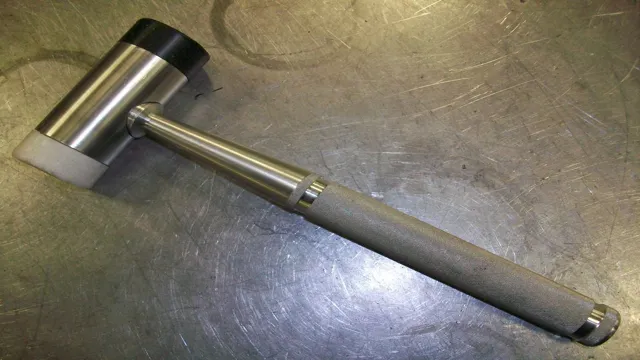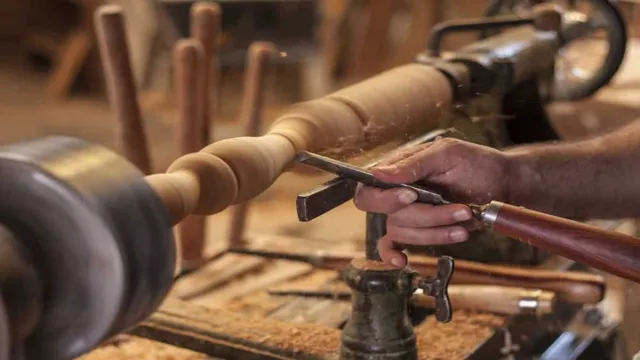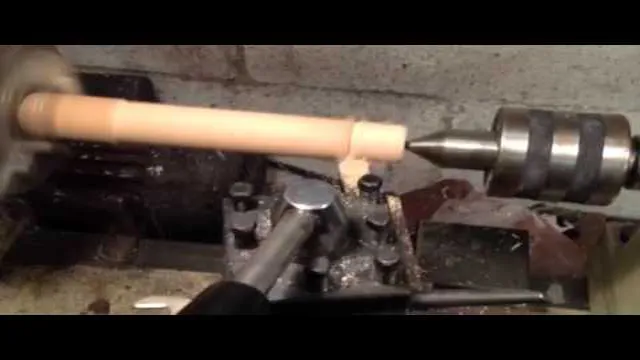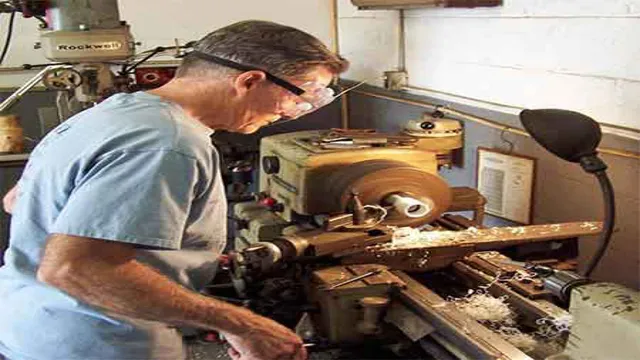How to Sharpen Metal Lathe Cutting Tools: Tips and Tricks for Optimal Performance

When working with a metal lathe, one of the most crucial skills to have is sharpening your cutting tools. Dull tools not only lead to poor quality cuts but can also cause safety hazards. If you’re new to using a metal lathe or just want to brush up on your skills, keep reading.
This blog post will cover everything you need to know about sharpening metal lathe cutting tools, including the tools and techniques you’ll need to get the job done right. With the right knowledge, you’ll be able to keep your tools sharp and your cuts precise, allowing you to take on any project with confidence.
Why Sharp Tools are Important for Metal Lathe Cutting
Learning how to sharpen metal lathe cutting tools is an important skill to have if you want to achieve precise and high-quality cuts. A well-sharpened cutting tool can make all the difference when it comes to the quality of your finished product. Using a dull tool not only produces a poorer finish, but it can also be dangerous.
As the cutting edge dulls, more pressure is needed to make cuts, which can cause the metal to warp or the tool to break. By regularly sharpening your metal lathe cutting tools, you can ensure that they remain in good condition and are able to make clean and accurate cuts. A properly sharpened cutting tool will also reduce the amount of time it takes to complete a project, as the tool will be able to work more efficiently with less force required from the operator.
Overall, knowing how to sharpen metal lathe cutting tools is crucial for any machinist or metalworker.
Improved Efficiency
As a metal lathe operator, having the right tools is essential to achieving efficient and precise cuts. Sharp tools, in particular, play a crucial role in ensuring smooth and consistent cuts, reducing the likelihood of errors and increasing overall productivity. With a sharp tool, the cutting edge can easily penetrate the material, minimizing the amount of force required to make cuts.
This not only reduces the risk of tool breakage but also contributes to shorter cycle times, ultimately improving overall efficiency. Choosing high-quality, sharp tools that are suitable for the specific material being cut can make all the difference in achieving exceptional results. Investing in quality tools and regularly sharpening them can save time and effort in the long run, thereby optimizing your metal lathe cutting performance.
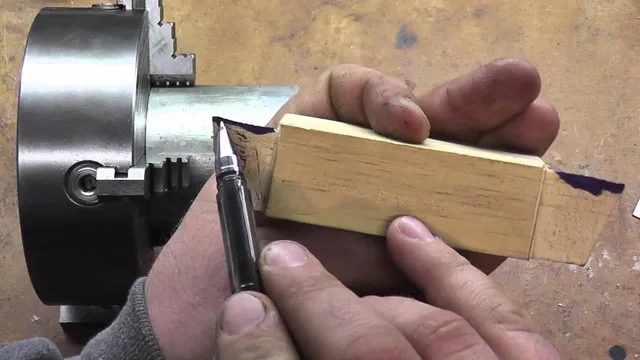
Better Quality Cuts
Metal lathe cutting requires sharp tools to achieve better quality cuts. When your lathe cutting tools are not sharp enough, they tend to scrape the metal instead of cutting it cleanly, resulting in rough and uneven surfaces. This not only affects the appearance of the finished product but can also compromise its functionality.
Dull tools also require more force to make the cuts, increasing the risk of tool breakage and causing unnecessary wear and tear on your equipment. By investing in high-quality, sharp cutting tools, you can minimize these issues and improve your metalworking results. Sharpening tools may seem like a simple task, but it requires skill and experience to get it just right.
You can also use different techniques such as honing or grinding to sharpen the tools. Remember, even the best tools will eventually become dull, so it’s important to keep them well-maintained to ensure consistent quality cuts.
Cost-Savings
Metal lathe cutting can be an expensive process, especially if you’re not using sharp tools. Dull tools can lead to imprecise cuts, which can increase material waste and slow down production time. This can ultimately end up increasing costs.
On the other hand, using sharp tools can greatly improve the overall efficiency of the metal lathe cutting process. Sharp tools produce accurate cuts, which reduces waste and increases the overall quality of the product. Additionally, sharp tools require less pressure to use, which can reduce wear and tear on the machine, ultimately leading to less machine maintenance and repair costs.
Ultimately, investing in sharp tools for metal lathe cutting can lead to significant cost-savings in the long run. Don’t underestimate the power of sharp tools – they can make all the difference in the efficiency and cost-effectiveness of your metal lathe cutting process.
Tools Required for Sharpening Metal Lathe Cutting Tools
If you’re looking to sharpen metal lathe cutting tools, you’ll need a few essential tools to get the job done. First off, you’ll need a bench grinder that has the ability to switch between a grinding wheel and wire brush. The grinding wheel will allow you to remove chips and nicks from your cutting tools, while the wire brush will clean off any debris or rust that has accumulated.
Additionally, you’ll need a diamond wheel dresser, which will help you to maintain a consistent wheel surface for optimal sharpening results. Other important tools to have on hand include a drill, cutting oil, and a honing stone for finishing your sharpened tools. With these tools in your arsenal, you’ll be well-equipped to keep your metal lathe cutting tools sharp and ready for action.
Grinding Wheel
Grinding Wheel When it comes to sharpening metal lathe cutting tools, there are a few tools you’ll need to ensure the job is done correctly. First and foremost, you’ll need a grinding wheel. The grinding wheel will be used to sharpen the edges of the cutting tool, removing any nicks or chips that may have formed over time.
It’s important to choose the right type of grinding wheel for your specific lathe cutting tool. Diamond or CBN wheels are the most popular choices, as they are durable and can grind even the hardest metals. Additionally, you’ll need a sharpening jig to hold the cutting tool at the correct angle while you sharpen it.
This will ensure that each tool is sharpened to the same angle, making it easier to use when you return it to the lathe. Don’t forget to wear safety goggles and gloves, and ensure that your grinding wheel is in good condition before you begin. With these tools in hand, you’ll be able to sharpen your metal lathe cutting tools like a pro!
Tool Rest
When it comes to sharpening your metal lathe cutting tools, there are a few key tools that you’ll need to have on hand. One of the most important is a tool rest, which is used to hold your tool steady as you sharpen it. A good tool rest should be sturdy and adjustable, allowing you to position your tool at the perfect angle for sharpening.
It should also be compatible with your lathe and easy to install and remove. Some tool rests may even include additional features, like built-in guides or jigs to help you achieve the perfect bevel on your cutting tools. Overall, a high-quality tool rest is an essential investment for anyone looking to keep their metal lathe cutting tools in top condition.
So, make sure to choose one that fits your needs and budget, and get ready to enjoy a sharper, more precise cutting experience.
Dressing Tool
When it comes to sharpening metal lathe cutting tools, there are a few essential tools you’ll need to get the job done right. One such tool is the dressing tool, which is used to ensure that the grinding wheel is in good shape before you begin sharpening. This is important because if the wheel is damaged or uneven, it can cause your tools to become dull or misshapen.
The dressing tool works by removing any debris or buildup from the surface of the wheel, allowing for a smoother, more even surface. This leads to a sharper and more precise edge when sharpening your cutting tools. So, if you want to get the most out of your metal lathe cutting tools, make sure you have a reliable dressing tool on hand before you start sharpening.
Protective Gear
When it comes to sharpening metal lathe cutting tools, having the right protective gear is crucial. This includes eye protection such as safety glasses or a face shield to prevent any flying debris from harming your eyes. It’s also important to wear a dust mask to avoid breathing in any metal dust.
In addition to protective gear, you will need the right tools to get the job done. This includes a bench grinder or belt sander for initial grinding, and a honing stone or diamond stone for honing and sharpening. Make sure to use the proper technique when sharpening your tools to prevent damage and ensure a sharp edge.
Taking the time to properly sharpen your metal lathe cutting tools with the appropriate gear and tools will not only keep you safe but also result in better performance.
Step-by-Step Guide to Sharpening Metal Lathe Cutting Tools
If you want to improve the performance of your metal lathe, sharpening cutting tools is a crucial step. Dull cutting tools can lead to inaccurate cuts, damaged workpieces, and frustration. But don’t worry, sharpening metal lathe cutting tools is relatively simple and straightforward, and with a few basic tools, you can do it yourself.
First, you will need a bench grinder, a honing stone, and a set of safety glasses to protect your eyes. Then, remove the cutting tool from the lathe and secure it in a vise. Use the bench grinder to create a new bevel with a 60-degree angle, being careful not to overheat or burn the metal.
Once done with the grinder, use a honing stone to remove the burr on the cutting edge, and create a sharp edge. Make sure to hone each cutting edge evenly, and frequently inspect for nicks or chips. With a little practice, you can significantly improve your lathe’s precision and cut quality, simply by sharpening your cutting tools regularly.
Step 1: Preparation
If you are looking to sharpen your metal lathe cutting tools, you have come to the right place. In this step-by-step guide, we will show you how to do it yourself, saving you both time and money. The first step is preparation.
Before you begin, you need to ensure that you have all the necessary equipment. This includes a sharpening stone or diamond abrasive, honing oil, safety glasses, and a dust mask. Once you have all the equipment, wear your safety gear and find a suitable workbench.
It’s important to have a steady and comfortable surface to work on. Also, make sure that the lathe tool is securely clamped onto the workbench to prevent any unwanted movement. By following these simple preparation steps, you will be on your way to ensuring that your metal lathe cutting tools are sharp and ready to use.
Step 2: Set up the Grinding Wheel
When it comes to sharpening metal lathe cutting tools, setting up the grinding wheel is a crucial step. The grinding wheel is the primary tool used to sharpen the cutting tool. Its size and composition determine the sharpness and durability of the cutting edge.
Before beginning the sharpening process, it’s essential to select the appropriate wheel for the job. Different types of wheels are available, including diamond, aluminum oxide, and silicon carbide. Ensure the wheel’s speed matches the manufacturer’s specifications, and the wheel is dressed correctly to avoid overheating or damage.
Additionally, ensure the tool rest is securely tightened in place and positioned at the appropriate height and angle to enable safe and efficient sharpening. Overall, correctly setting up the grinding wheel is key to achieving optimal results when sharpening metal lathe cutting tools.
Step 3: Prepare the Cutting Tool
Now that you have selected the correct material and identified the cutting tool, it’s time to prepare it for sharpening. The most important aspect of preparing the tool is to ensure that it is clean of any debris or rust that could make sharpening difficult. Begin by removing any chips or nicks on the tool edge by using a grinding wheel or file.
Once all pits have been removed, clean the tool thoroughly with a wire brush to remove any rust or debris. Next, you want to ensure that the tool is ground to the correct angle and shape. You can do this by using a tool rest and a grinding wheel.
It is crucial to follow the manufacturer’s guidelines for the tool angle and be sure to maintain this angle while sharpening. Take your time to avoid overheating and ruining the tool’s temper. Finally, hone the edge with a fine-grit sharpening stone to achieve the desired edge finish.
By taking the time to prepare your cutting tool correctly, you will have a well-honed tool that will cut precisely, adding to the quality of your finished workpiece.
Step 4: Start Grinding the Tool
Now that you’ve prepared the tool, it’s time to start grinding it. The goal is to create a sharp cutting edge that is crucial for efficient metal lathe operations. You’ll need a bench grinder with appropriate wheels, such as aluminum oxide or diamond, to start grinding the tool.
Begin by placing the grinder in a secure position and turning it on. Hold the tool firmly with both hands and position it against the grinding wheel at about a 20-degree angle. Move the tool back and forth across the grinding wheel, ensuring that you’re maintaining the correct angle.
Keep the wheel well lubricated with coolant or water to prevent overheating and damage to the tool. Check the progress frequently, inspecting the tool for any signs of damage or wear. Remember to work slowly and deliberately, taking your time to grind the tool until you’ve achieved the desired shape and sharpness.
With practice and patience, you’ll become proficient in grinding lathe cutting tools, leading to smoother and more precise machining operations.
Step 5: Correct Grinding Angles
When sharpening your metal lathe cutting tools, it is crucial to ensure that they are ground at the correct angles. This will provide you with a sharper tool that will cut more precisely and last longer. To achieve the perfect grinding angle, you should use a tool rest and an angle gauge.
Start by grinding the front clearance angle, also known as the rake angle. This is the angle between the top face of the tool and the surface being machined. The ideal angle for the rake angle will depend on the material you are cutting, but it is usually between 5 and 15 degrees.
Next, grind the side clearance angle, which is the angle between the side of the tool and the surface being machined. The ideal angle for the side clearance angle is typically between 8 and 15 degrees. Finally, grind the top rake angle, which is the angle between the top face of the tool and the cutting edge.
The ideal angle for the top rake angle will depend on the material you are cutting, but it is usually between 0 and 10 degrees. By ensuring that your tools are ground at the correct angles, you will achieve a sharper, more precise cut and prolong the life of your tools.
Step 6: Checking for Sharpness
Checking for sharpness is the final step in our guide to sharpening metal lathe cutting tools. This step is crucial, as a dull or improperly sharpened tool can damage the workpiece or even cause injury to the operator. To check for sharpness, you can use a magnifying glass or loupe to inspect the cutting edge.
Look for a smooth, polished surface without any nicks, chips, or scratches. You can also gently touch the edge with your fingertips to feel for any rough or jagged areas. If the edge feels smooth and sharp, you’re good to go.
However, if there are any imperfections, you may need to repeat the sharpening process or use a honing stone to remove any burrs. By taking the time to properly check for sharpness, you’ll ensure that your cutting tools perform at their best and produce high-quality work.
Conclusion and Final Thoughts
In conclusion, sharpening metal lathe cutting tools is an essential skill for any machinist, but it doesn’t have to be a daunting task. With the right technique, proper equipment, and a little bit of patience, you can turn even the dullest tool into a sharp and precise cutting instrument. So, grab your sharpening stones, put on some music, and get ready to unleash your inner sharpener.
Remember, a dull tool is like a bad joke – nobody wants to hear it.”
FAQs
1. What materials are needed to sharpen metal lathe cutting tools?
To sharpen metal lathe cutting tools, you will need a bench grinder, abrasive wheels, honing oil, protective gear, and a sharpening jig.
2. Can a beginner sharpen metal lathe cutting tools?
Yes, a beginner can sharpen metal lathe cutting tools, but it may take some practice to achieve the desired results.
3. How often should I sharpen my metal lathe cutting tools?
The frequency of sharpening metal lathe cutting tools depends on how often they are used. However, a good rule of thumb is to sharpen them every time they become dull.
4. What is the ideal angle for sharpening metal lathe cutting tools?
The ideal angle for sharpening metal lathe cutting tools is between 55 and 60 degrees.
5. Is it necessary to use a sharpening jig when sharpening metal lathe cutting tools?
Using a sharpening jig is not necessary, but it can help ensure a consistent edge angle and prevent damage to the cutting tool.
6. Can I sharpen my metal lathe cutting tools by hand?
Yes, it is possible to sharpen metal lathe cutting tools by hand using a sharpening stone, but it can be more time-consuming and challenging to maintain consistent angle and sharpness.
7. What are the safety precautions I should take when sharpening metal lathe cutting tools?
When sharpening metal lathe cutting tools, it is essential to wear protective gear, such as safety glasses and gloves, to prevent injury. It is also important to use the correct sharpening equipment and follow manufacturer instructions.

